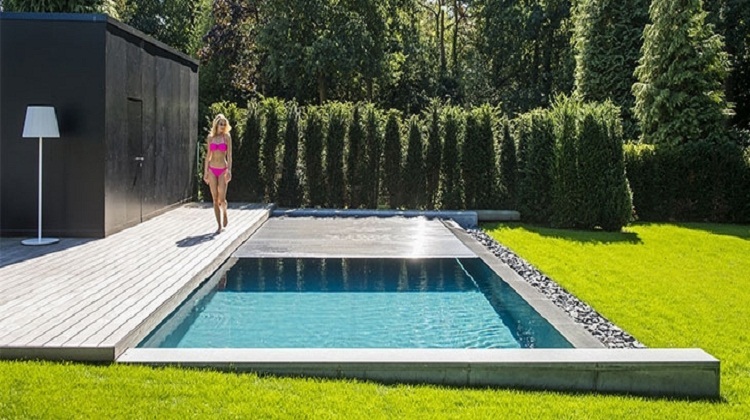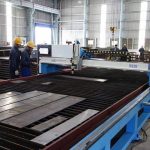Are you looking for the perfect way to keep your pool clean and safe? Automatic pool covers are a great option that can help you do just that. In this article, we’ll be taking a comprehensive look at automatic retractable pool covers and discussing the different types available, so you can find the right one for you. Read on to learn more!
Benefits of Installing an Automatic Pool Cover
An automatic pool cover offers many benefits that can save you time and money, as well as improve the safety of your swimming pool. Here are some of the top benefits of installing an automatic pool cover:
- Save on Water and Chemicals: An automatic pool cover helps reduce evaporation by up to 95%, which can save you a significant amount of money on your water bill. In addition, it can also help reduce the number of chemicals needed to maintain your pool water quality.
- Extend Your Swimming Season: An automatic pool cover can extend your swimming season by weeks or even months, depending on your climate. In colder climates, a pool cover can prevent your pool from freezing over in the winter.
- Improve Pool Safety: They can greatly improve the safety of your swimming pool by preventing unauthorized access and providing a barrier between swimmers and the water. In addition, most automatic pool covers come equipped with an automatic shut-off feature that will activate if someone falls into the pool, helping to prevent tragic accidents.
Different Types of Automatic Pool Covers
There are three different types of automatic pool covers:
- The fully automatic pool cover: This type of pool cover is the most expensive and is operated by a motor. It is also the most convenient to use, as it can be opened and closed with the push of a button.
- The semi-automatic pool cover: This type of pool cover is less expensive than the fully automatic one and is operated by a manual lever. It is not as convenient to use as the fully automatic one, but it does provide some protection for your pool.
- The manual pool cover: This type of pool cover is the least expensive and is operated by a manual lever. It is not as convenient to use as the other two types, but it will still provide some protection for your pool.
How to Choose the Right Automatic Swimming Pool Cover for You?
If you are looking for an automatic swimming pool cover, there are a few things you will need to consider in order to choose the right one for you. First, you need to decide what type of cover you want. There are two main types of automatic pool covers: solid and mesh. Solid covers are great for preventing leaves and debris from getting into your pool, but they can be more expensive. Mesh covers allow water to drain through them, so they are less likely to accumulate leaves and debris, but they may not provide as much protection from the elements.
Once you have decided on the type of cover you want, you will need to measure your pool. You will need to know the length and width of your pool in order to choose a cover that is the right size. Additionally, you will need to know the depth of your pool in order to choose a cover that is deep enough to reach the bottom of your pool.
Finally, you will need to decide how much money you are willing to spend on an automatic pool cover. There are a variety of covers available at different price points, so it is important to set a budget before you start shopping. With these factors in mind, you should be able to find an automatic pool cover that is perfect for your needs!
Installation Process of pool enclosures
Installing a pool enclosure is a great way to extend the swimming season and keep your pool clean and safe. But before you purchase an enclosure, it’s important to understand the installation process and what you’ll need to do to prepare your home for the new addition.
Here’s a step-by-step guide to installing a pool enclosure:
- Choose the right location for your enclosure. It should be flat and level, and large enough to accommodate the size of your pool.
- Clear the area around the perimeter of your pool, removing any landscaping features or obstacles that could get in the way of installation.
- Dig trenches around the perimeter of the area where you’ll be installing the enclosure. The trenches should be at least 18 inches deep and 12 inches wide.
- Install footings in the trenches using concrete or another sturdy material. The footings will support the weight of the enclosure and keep it from shifting over time.
- Once the footings are in place, you can begin assembling the frame of the enclosure using aluminum or PVC pipe. Make sure all joints are securely fastened together with clamps or brackets.
- Cover the frame with mesh screening or another type of weatherproofing material. This will keep insects and debris out while allowing air and sunlight to pass through.
Alternatives to an Automatic Pool Cover
An automatic pool cover is a great way to keep your pool clean and safe, but it’s not the only option. There are a few alternatives to an automatic pool cover that you might want to consider.
One alternative to an automatic pool cover is a manual pool cover. Manual pool covers are less expensive than automatic pool covers, but they require more effort to put on and take off. Another alternative is a solar pool cover. Solar pool covers use the sun’s energy to heat the water in your pool, which can save you money on your energy bill. Finally, you could also consider using a safety fence around your pool. A safety fence will keep children and pets out of the water when you’re not around to supervise them.
Conclusion
They are a great way to keep your pool safe and secure. With the right information, you can make an informed decision when it comes to selecting the best automatic pool cover for your specific needs. By considering factors such as budget, size, material type, and installation requirements, you’ll be able to find a pool cover that provides maximum protection while still fitting into your lifestyle. Whether you’re looking for something simple or complex, there is an automatic pool cover out there that is sure to fit the bill!



